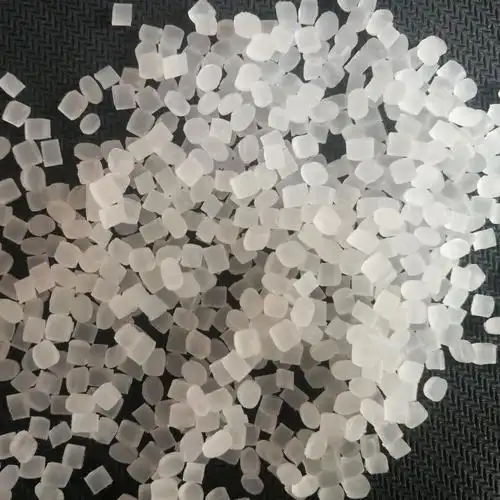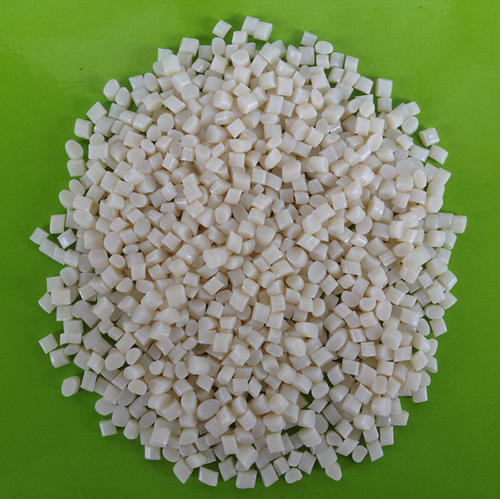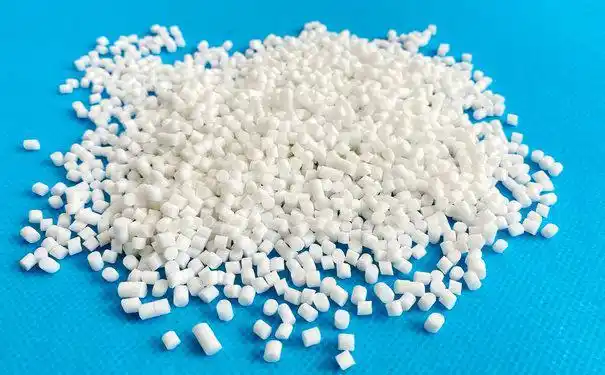Having spent over a decade in the plastics industry, I’ve worked on countless projects involving Thermoplastic Elastomers (TPE) in dual-color or two-shot molding, a process that’s both fascinating and finicky. One of the most frustrating issues manufacturers face is poor bonding between the TPE and the substrate (often a rigid plastic like PP, ABS, or PC) in dual-color molding. This can manifest as peeling, delamination, or weak adhesion, leading to rejected parts and production delays. From my years of troubleshooting on the factory floor and collaborating with clients, I’ve learned that poor bonding is rarely a single-issue problem—it’s often a mix of material, process, and design factors. Let’s break down the reasons behind this issue, share practical solutions, and help you achieve strong, reliable bonds in your TPE dual-color molding projects.

Understanding TPE Dual-Color Molding
Before we dive into the causes of poor bonding, let’s clarify what dual-color molding (also known as two-shot or multi-material molding) entails. This process involves molding two different materials—typically a rigid thermoplastic substrate and a soft TPE overmold—in a single cycle to create a part with both hard and soft components, like tool grips, phone cases, or medical device handles. The goal is to achieve a seamless bond between the TPE and the substrate, combining functionality with aesthetics.
Poor bonding occurs when the TPE fails to adhere properly to the substrate, resulting in peeling, gaps, or weak interfaces. In my experience, this issue can stem from material incompatibility, improper processing conditions, mold design flaws, or surface preparation issues. Below, I’ll explore each cause in detail, drawing on real-world examples and solutions I’ve applied over the years.
Common Causes of Poor Bonding in TPE Dual-Color Molding
1. Material Incompatibility
One of the most frequent reasons for poor bonding is incompatibility between the TPE and the substrate material. TPEs, often based on SEBS (styrene-ethylene-butylene-styrene), TPU, or TPV, require chemical or mechanical compatibility with the substrate to form a strong bond.
Why It Happens: TPEs bond best with substrates that have similar polarity or molecular structure, such as polypropylene (PP) or polyethylene (PE) for SEBS-based TPEs. Polar substrates like ABS or PC may require specially formulated TPE grades with enhanced adhesion properties. If the TPE and substrate aren’t matched, the bond will be weak or non-existent.
Personal Experience: Early in my career, I worked on a project for a soft-touch handle where the TPE peeled off the ABS substrate. After reviewing the material specs, we realized the TPE was formulated for PP, not ABS. Switching to an ABS-compatible TPE grade solved the issue instantly.
Solution: Consult your TPE supplier to select a grade specifically designed for the substrate you’re using. Request a compatibility chart or conduct adhesion tests (e.g., peel strength tests) before production. For polar substrates, consider TPEs with adhesion promoters or primers to enhance bonding.

2. Incorrect Processing Temperatures
Temperature control is critical in dual-color molding, as it affects how the TPE melts and bonds to the substrate. If the temperatures are too low or too high, the bond strength suffers.
Why It Happens: TPE requires a specific melt temperature (typically 160°C to 220°C for SEBS-based TPEs) to flow properly and form a strong interfacial bond with the substrate. If the TPE is too cold, it won’t melt sufficiently to penetrate the substrate’s surface. If too hot, it can degrade or cause the substrate to soften excessively, weakening the bond. The substrate’s mold temperature also matters—too low, and the TPE won’t adhere well; too high, and it may distort the substrate.
Anecdote: I once consulted for a factory producing TPE-overmolded phone cases. The TPE was peeling off the PC substrate because the mold temperature was set at 50°C, too low for proper adhesion. Raising it to 80°C, per the supplier’s recommendation, improved the bond significantly.
Solution: Check the TPE and substrate datasheets for recommended melt and mold temperatures. For TPE, set barrel temperatures between 160°C and 220°C, and ensure the substrate’s mold temperature is high enough (e.g., 60°C to 90°C for PP or ABS) to promote adhesion without distortion. Use a pyrometer to verify actual temperatures, as machine readouts can be off.
3. Inadequate Surface Preparation
The surface condition of the substrate plays a huge role in TPE bonding. A contaminated or smooth surface can prevent the TPE from adhering properly.
Why It Happens: Mold release agents, oils, or dust on the substrate can create a barrier, reducing adhesion. A perfectly smooth substrate surface may also limit mechanical interlocking, where the TPE grips microscopic textures on the substrate. In dual-color molding, the substrate is molded first and may pick up contaminants before the TPE is applied.
Experience Note: During a project for automotive grips, we noticed inconsistent TPE bonding. The culprit was a mold release agent left on the PP substrate from the first shot. Switching to a water-based release agent and cleaning the mold between shots eliminated the issue.
Solution: Avoid oil-based mold release agents; use water-based or no release agents if possible. Clean the substrate surface between shots with isopropyl alcohol or plasma treatment for critical applications. Design the substrate mold with a slightly textured surface (e.g., EDM finish) to enhance mechanical bonding.
4. Mold Design Issues
The mold design can make or break the bonding process in dual-color molding. Poorly designed molds can lead to uneven TPE flow, trapped air, or insufficient contact between materials.
Why It Happens: Issues like improper gate placement, inadequate venting, or misaligned mold halves can cause uneven TPE flow, leading to weak bonding. If the TPE cools too quickly before contacting the substrate, adhesion suffers. Inadequate shut-off areas (where the mold seals the first shot from the second) can also allow TPE to leak, reducing contact pressure.
Real-World Example: In a medical device project, we saw delamination in TPE-overmolded handles. The mold’s venting was insufficient, trapping air at the TPE-substrate interface. Adding micro-vents and adjusting gate placement improved bonding.
Solution: Ensure the mold has proper venting (e.g., 0.01-0.02 mm vents) to release trapped air. Place gates to promote uniform TPE flow and contact with the substrate. Verify shut-off areas are tight to maintain pressure during the TPE shot. Work with an experienced mold designer to optimize the tool for dual-color molding.

5. Insufficient Injection Pressure or Speed
Injection pressure and speed affect how well the TPE fills the mold and bonds to the substrate. Too low, and the TPE may not penetrate the substrate’s surface effectively; too high, and it can cause flash or distortion.
Why It Happens: Low injection pressure or speed can result in incomplete filling or poor interfacial contact, reducing bond strength. This is especially common with complex geometries or thin TPE layers. Conversely, excessive pressure can push the TPE into unintended areas, weakening the bond.
Lesson Learned: In a tool grip project, we struggled with TPE peeling at the edges. Increasing the injection pressure from 800 bar to 1000 bar ensured better TPE penetration into the substrate’s texture, improving adhesion.
Solution: Adjust injection pressure and speed based on the TPE’s viscosity and the part’s geometry. Start with the supplier’s recommended settings (e.g., 800-1200 bar for pressure) and fine-tune during test runs. Use a multi-stage injection profile to balance filling and packing.
6. Material Degradation
Degradation of the TPE or substrate can weaken bonding by altering their chemical or physical properties. This is often caused by excessive heat, prolonged residence time, or overuse of regrind.
Why It Happens: TPEs are sensitive to thermal degradation, especially SEBS-based grades. Overheating (above 220°C for most TPEs) or long residence times in the barrel can break down polymer chains, reducing adhesion. Similarly, a degraded substrate (e.g., overheated ABS) may not bond well. Regrind, if overused, can also introduce inconsistencies.
Anecdote: A client once reported poor TPE bonding in a high-volume run. We found they were using 50% TPE regrind, which had degraded after multiple cycles. Reducing regrind to 15% and optimizing cycle times fixed the issue.
Solution: Keep barrel temperatures within the recommended range and minimize residence time by optimizing cycle times. Limit TPE and substrate regrind to 10-20% of the mix, ensuring it’s from a clean, single source. Monitor for signs of degradation, like discoloration or brittleness.
7. Moisture in Materials
Moisture in either the TPE or substrate can cause poor bonding by creating voids or splay at the interface, weakening adhesion.
Why It Happens: TPEs, especially TPU-based grades, are hygroscopic and can absorb moisture from the environment. Substrates like PC or nylon are also prone to moisture uptake. During molding, moisture turns into steam, forming bubbles or splay that disrupt bonding.
Experience Note: In a humid summer, we saw bonding issues in a TPE-PC part. Testing revealed moisture in the PC pellets. Drying both materials at 90°C for 3 hours before molding resolved the problem.
Solution: Dry TPE and substrate materials before processing. For TPE, use a desiccant dryer at 80°C to 100°C for 2-4 hours. For substrates like PC or nylon, follow the supplier’s drying recommendations (e.g., 120°C for PC). Store materials in sealed containers to prevent moisture reabsorption.

Troubleshooting Table for TPE Dual-Color Molding Bonding Issues
Here’s a table summarizing the key causes, symptoms, and solutions based on my experience:
| Issue | Cause | Symptoms | Solution |
|---|---|---|---|
| Material Incompatibility | TPE and substrate not chemically compatible. | Peeling or no adhesion. | Use TPE grade matched to substrate; test adhesion with peel strength tests. |
| Incorrect Temperature | Low or high melt/mold temperatures. | Weak bonds, delamination, or distortion. | Set temperatures per datasheet (160°C-220°C for TPE, 60°C-90°C for mold). |
| Inadequate Surface Prep | Contaminated or smooth substrate surface. | Poor adhesion, peeling at edges. | Avoid oil-based release agents; use textured mold finish or plasma treatment. |
| Mold Design Issues | Poor venting, gate placement, or shut-offs. | Air traps, uneven TPE flow, weak bonds. | Add micro-vents, optimize gate placement, ensure tight shut-offs. |
Practical Tips for Successful TPE Dual-Color Molding
Over the years, I’ve developed a checklist for achieving strong TPE-substrate bonds:
Select the Right TPE Grade: Work with your supplier to choose a TPE formulated for your substrate. Request samples and test adhesion before committing.
Optimize Processing Parameters: Follow the datasheet for melt temperature, mold temperature, injection pressure, and speed. Run small batches to fine-tune settings.
Prepare the Substrate: Ensure the substrate surface is clean and slightly textured. Avoid oil-based mold release agents and consider plasma treatment for polar substrates.
Design the Mold Properly: Include adequate venting, strategic gate placement, and robust shut-off areas. Work with a mold designer experienced in dual-color molding.
Dry All Materials: Dry TPE and substrate pellets to remove moisture, especially in humid environments. Use a desiccant dryer and store materials properly.
Limit Regrind: Keep TPE and substrate regrind to 10-20% to avoid degradation. Test regrind for consistency before use.
Test Bond Strength: Perform peel or tensile tests on sample parts to verify adhesion before full production. This has saved me from costly rejections.
Pro Tip: Keep a detailed log of processing conditions for each TPE-substrate combination. This makes it easier to replicate successful runs or troubleshoot issues later.

Safety and Quality Considerations
When addressing bonding issues, prioritize safety. Overheating TPE can release volatile organic compounds (VOCs), so ensure proper ventilation in the molding area. Wear protective gear when handling hot molds or cleaning equipment. From a quality perspective, poor bonding can compromise the part’s mechanical performance or durability, especially in applications like medical devices or automotive components. Test finished parts for compliance with standards like ISO 10993 (for medical) or ASTM D638 (for tensile strength).
Personal Insight: In a project for TPE-overmolded toothbrush handles, poor bonding led to returns due to peeling grips. We traced it to a smooth substrate surface and fixed it by adding a textured EDM finish to the mold, ensuring both aesthetics and functionality.
Environmental Impact
TPE and most substrates are recyclable thermoplastics, but poor bonding can result in scrap that’s harder to reuse. Minimize waste by addressing bonding issues early and limiting regrind to 10-20%. Dispose of defective parts according to local regulations. For eco-conscious projects, explore bio-based TPEs or substrates like bio-PP, which some suppliers now offer.
Conclusion
Poor bonding in TPE dual-color molding can feel like a daunting challenge, but with a systematic approach, it’s entirely solvable. From my experience, the issue often stems from material incompatibility, temperature mismatches, surface preparation, or mold design flaws. By carefully selecting compatible materials, optimizing processing conditions, and maintaining your equipment, you can achieve strong, reliable bonds that meet both aesthetic and functional requirements.
If you’re struggling with peeling TPE in your dual-color molding project, don’t despair. Start by reviewing your material choices and processing parameters, and don’t hesitate to consult your TPE supplier or a molding expert. I’ve been through these challenges, and there’s nothing more satisfying than seeing a perfectly bonded part roll off the production line. Keep tweaking, testing, and learning—you’ll get there!

Frequently Asked Questions
Q: How can I test TPE-substrate bond strength?
A: Use peel tests (e.g., ASTM D903) or tensile tests to measure adhesion strength. Test sample parts under real-world conditions to ensure reliability.
Q: Can I use any TPE with any substrate?
A: No, TPEs must be formulated for specific substrates (e.g., PP, ABS, PC). Check with your supplier for compatible grades and test adhesion before production.
Q: Why does my TPE bond well in small batches but not in full production?
A: This could be due to inconsistent temperatures, contamination, or regrind overuse. Verify settings, purge the machine, and limit regrind to 10-20%.
Q: Is plasma treatment necessary for TPE bonding?
A: Not always, but it’s effective for polar substrates like PC or ABS. For non-polar substrates like PP, a textured surface is often sufficient.
Q: Can I reuse parts with poor TPE bonding?
A: If the issue is cosmetic and the materials aren’t degraded, you can regrind up to 10-20% for reuse. Test the regrind’s properties to ensure quality.
Q: How do I prevent air traps in dual-color molding?
A: Add micro-vents (0.01-0.02 mm) to the mold and optimize gate placement to allow air to escape. Ensure proper shut-off areas to maintain pressure.





